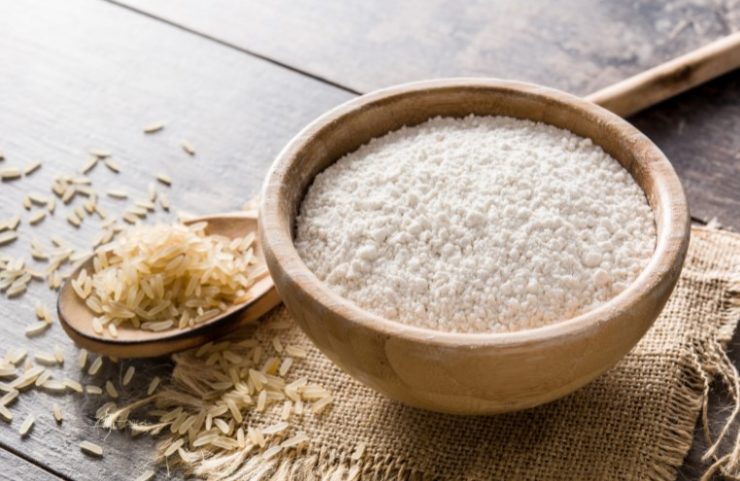Fortunately, finding an alternative to rice flour isn’t difficult.
Whether you need to thicken, fry, or bake – there are several pantry staples that will get you of a jam. Here are a few of my favorites,
- For Thickening Sauces: Cornstarch, Potato Starch
- For Frying: Potato Starch
- For Baking: Sorghum Flour, All-Purpose Flour
In this article, I’ll cover several white rice flour substitutes at length. We’ll discuss suitable use cases, substitution ratios, and tips for how to get best results with each one. If you’re looking to substitute brown rice flour, start here instead.
In This Article
What can I substitute for rice flour?
1. Cornstarch

Corn starch is an excellent rice flour substitute that’s also gluten-free. It works well for thickening, baking, and frying.
For baking and frying, you can substitute cornstarch in equal amounts. But, the process for thickening sauces is a bit different.
Rice flour can be whisked into a cooking sauce as is and it will work it’s magic. Cornstarch, on the other hand, needs to be mixed with water or another liquid that’s either cold or at room temperature. This is known as a cornstarch “slurry”.

Time Saver: Skip the measuring when making your slurry and simply aim for the consistency of heavy cream.
The slurry can then be whisked into any simmering liquid for almost instant thickening power. If your slurry sits around for too long it will separate. So make sure to give it a good mix before adding it to your recipe.
2. Potato Starch
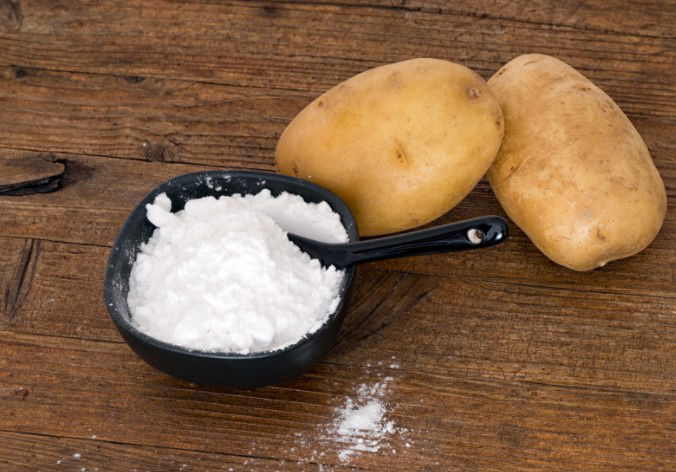
Potato starch is another great gluten-free option that can be a stand-in for most situations.
It can be used as a thickener in the same way as rice flour, but you’ll want to make sure it doesn’t get cooked for too long. When potato starch is simmered or boiled for long periods it will begin to break down and lose its thickening power.
Potato starch is also one of my favorite options when it comes to deep-frying. It produces a very light and crispy exterior that doesn’t absorb much oil.
3. Tapioca Flour
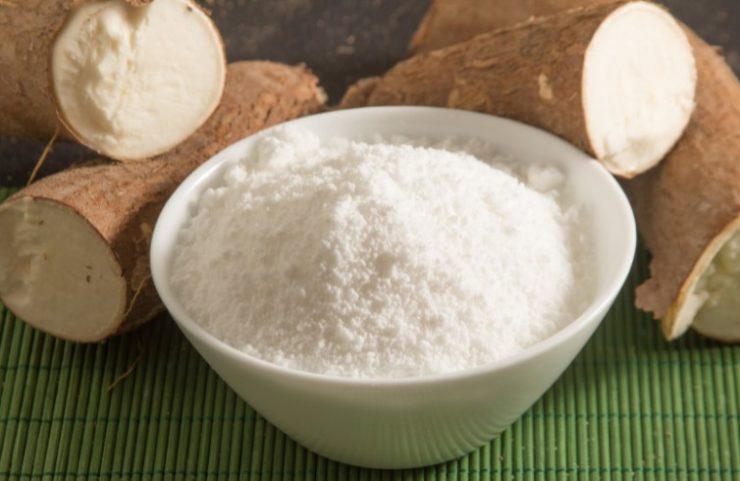
This is another good all-around alternative. And, it sticks with the gluten-free theme. Just like with cornstarch and potato starch, tapioca flour can be used to thicken, fry, and bake. All without adding any real noticeable flavor.
While tapioca flour works well in savory applications, it does have a hint of sweetness to it. That’s why I like to use it for sweet applications, and it’s my favorite choice when it comes to thickening pie fillings.
4. All-Purpose Flour
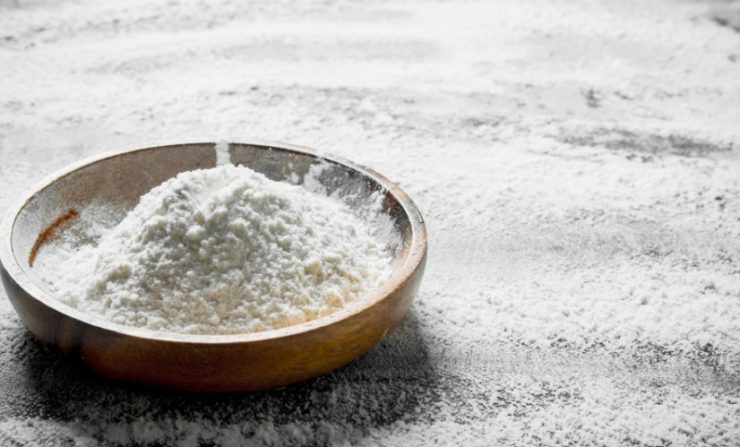
All-purpose flour might be the most versatile option on the list. But, if gluten is out of the question, then go ahead and skip this one altogether.
This can be used for just about any recipe need. Frying, baking, noodle making, and thickening are all in AP flour’s wheelhouse.
When it comes to thickening, you’ll want to cook your flour with a bit of fat before using it and also cook it some more once it’s added to a soup or sauce. Otherwise, you can end up with an unpleasant floury taste and grainy texture.
5. Sorghum Flour
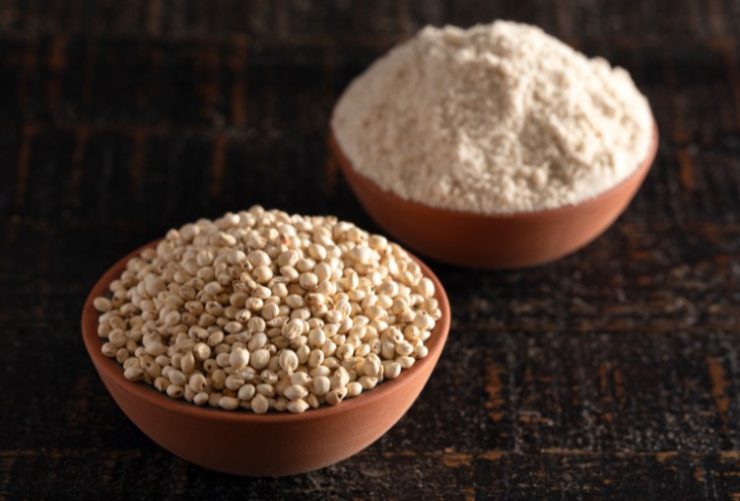
Sorghum flour is growing in popularity in the US, but it’s one of the most important and widely used grains throughout Africa, the Middle East, and Asia. And when it comes to gluten-free baking applications, sorghum flour is likely your best bet.
Sorghum does bring its own unique and slightly sweet flavor to the mix, which makes it perfectly suited for many baking applications.

Pro Tip: use a binder like eggs or xanthan gum to keep your baked goods from crumbling and falling apart.
6. Coconut Flour

Coconut flour is simply made by drying and finely grinding coconut flesh. It’s a great rice flour substitute in baked goods and for deep frying. But, it does add a fairly strong flavor of its own.
The coconut flavor is often a welcome addition in sweet baked applications, and it works really well as a coating for fried seafood.
When using coconut flour for baking, keep in mind that it will absorb a lot of liquid. So, it may take more water, milk, or fat to avoid overly dry baked goods.
7. Almond Flour
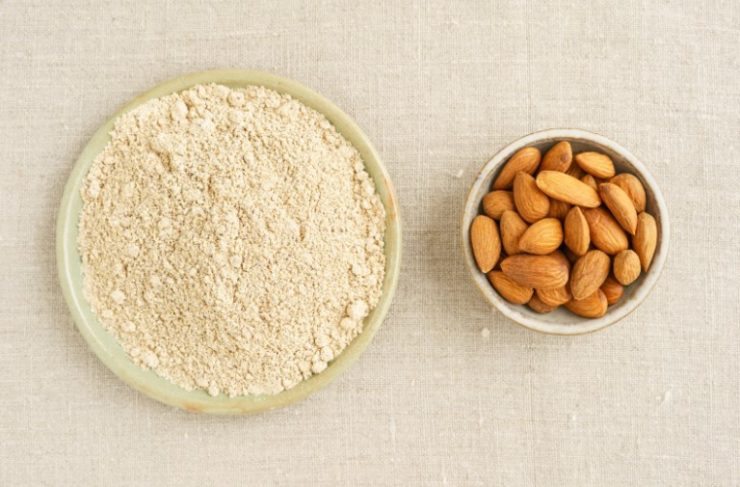
Almond flour works just about the same as coconut flour, but with its own unique taste. This is another alternative that’s a great addition to sweet baked goods or as a coating for fried fish or chicken.
If you’re using it for frying, make sure to keep the temperature down as almond flour can be quick to burn at high temps.
8. Millet Flour
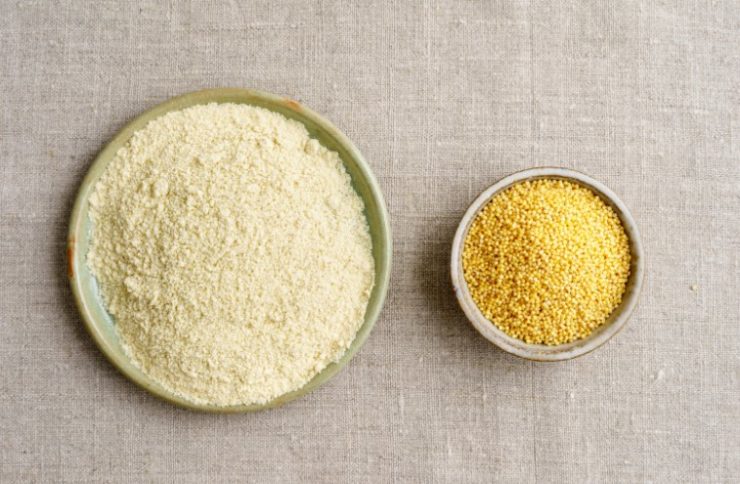
Millet flour is a gluten-free grain option that is a perfect substitute when it comes to baking. Millet has a slightly nutty flavor, but it works well in sweet and savory recipes.
Another bonus is that it can create a very nice cake-like texture in your baked goods. But, you’ll generally want to pair this with another flour alternative to keep your recipe from becoming mealy or too strongly flavored.
9. Chickpea Flour

Chickpea or garbanzo bean flour can be used in place of rice flour in many baking scenarios. But, because it has a pretty strong and distinct taste, you’ll want to think carefully before going with this substitute.
This is a good option for gluten-free flatbreads like pizza crust, or tortillas. And the flavor goes particularly well with Middle-Easter and Indian cuisines.
Chickpea flour is another option that sucks up a ton of moisture, so make sure you account for that when making your recipe.
Consider This Before Picking An Alternative
While there are a lot of options that work well for thickening, baking, and frying, each one comes with its own slightly unique set of rules. So, take some time and get to know your substitute before going full throttle.
Most substitutes for thickening are easy to implement and you won’t have to worry about them changing the flavor of the dish.
But for baking, there are more things to consider. Such as how the substitute flour will affect the taste of the dish, as well as how it will change the consistency and amount of liquid you will need.
For more ingredient substitutes and culinary principles take advantage of our wealth of knowledge in the Kitchen Ambition Cooking School.
FAQ
What’s A Good Rice Flour Substitute For Frying?
Potato starch is a perfect rice flour substitute for frying. It’s gluten-free, doesn’t have much of its own flavor, and creates a similarly light and crunchy texture.
What’s A Good Rice Flour Substitute For Kimchi?
If you don’t have rice flour for your kimchi, skip it altogether. The rice flour slurry helps with the consistency of the chili paste, but doesn’t have much effect on the end product. Even if I do have rice flour around, I almost always leave it out anyway.
What’s A Good Rice Flour Substitute For Noodles?
All-Purpose flour is going to be your best and easiest substitute for making noodles. The process and end result will be different from rice noodles, but you’ll still be able to use them in the same recipes.
Is glutinous rice flour the same as white rice flour?
Glutinous rice flour, as misleading as the name may be, doesn’t actually contain gluten. It refers more to the gooey, sticky consistency that you get when it’s cooked. This is a very common ingredient in Asian desserts. And if you don’t have any for a recipe that calls for it, you’re better off stopping and picking back up once you have time to get some from the store.
